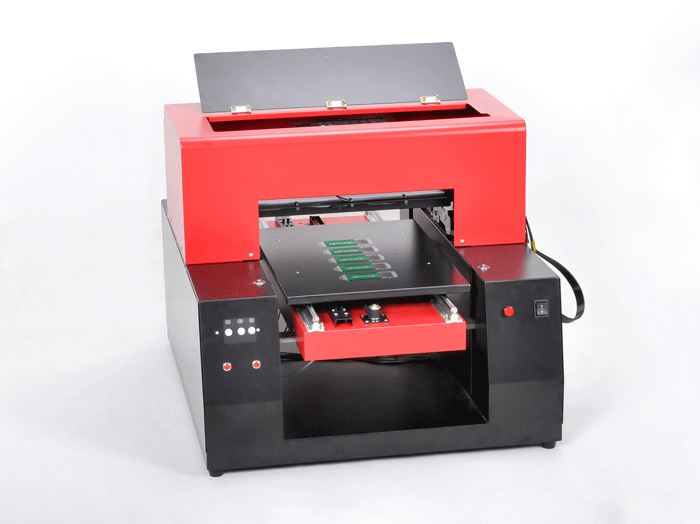The whole process of trademark printing can be roughly divided into four parts: design, plate making, printing and post-press processing. They are interconnected and inseparable. This article briefly describes the characteristics and requirements of the trademark screen printing process.
First, the trademark screen printing design
The trademark screen printing process design has the following characteristics:
1. Design for the end use of the job
Different jobs have different requirements for the used paper. For example, automatic labeling is used for the label of bottled wine. The direction of bending after glueing must be matched with the automatic labeling machine. Otherwise, it cannot be produced on the automatic assembly line.
2. Hollow and mosaic design
Logo design often requires hollowing and inlay processing. In particular, products that require gold (silver) printing must be designed as a hollow version. Otherwise, gold (silver) ink is directly printed on other inks, and the problem of darkening is likely to occur.
3. Match
One of the distinguishing features of trademark printing is the combination of multiple combinations, ranging from two to several, and as many as several dozen. It is more appropriate to determine how many plans are linked together, depending on the process conditions.
1) The ease of post-processing. If there are many post-processing operations in the job, the layout should not be done too much. Otherwise, due to the poor temperature and humidity control in the printing shop, it is very easy to cause the paper to pump up. This will not only affect overprinting, but also give back stamping and die. Cutting and other processes have caused difficulties in positioning and registration.
2) Shaped trademarks. The area of ​​the trademark is generally not very large. For the thin paper special-shaped trademark that needs to be die-cut, the combination should not be too much, otherwise the precision of the die-cut production will affect the quality of die-cutting.
3) Printing quantity. If the number of prints is not large, the number of joints cannot be excessive, otherwise the layout is too large and the cost of making a die cut will inevitably increase the cost.
4) Paper opening count. Due to the influence of the trademark size, it is impossible to accurately combine eight, four, or split editions. Therefore, the principle of selecting the appropriate assembly method should be based on the principle of minimizing printing paper.
It can be seen from the characteristics of the trademark screen printing design that an outstanding trademark designer must not only have innovative design concepts and flexible design skills, but also be familiar with printing and post-press processing technologies, so that the designed trademarks are novel and unique. It also meets the requirements of printing and post-printing processes to avoid unnecessary economic losses. For example, the surrounding of the trademark pattern is too close to the finished product size. Due to the factors such as the paper deformation and the inaccuracy of the die cutting tool, it often results in deflection of the die-cutting product and excessive errors, thus causing the product to be scrapped. When this happens, the designer should adjust and change the design to suit the printing and finishing requirements.
Second, the production of screen printing plate
1. The basic process of photographic emulsion direct plate making
The photographic emulsion direct plate making method is currently a kind of screen printing plate making method that is commonly used in China, and its process flow mainly includes the following points.
1) Degreasing Before fabricating the screen plate, the screen must be degreased with an appropriate degreasing agent. Be careful not to use household decontamination powder or detergent.
2) Drying After degreasing, the screen is rinsed with clean water, and all moisture on the plate is sucked with a gas brush, and then placed in an oven at 30°C to 40°C for thorough drying.
3) Coat the Photosensitive Degel The diazo emulsion is evenly applied to the screen using a suitable applicator, usually wet to wet.
4) Drying of the screen The screen plate coated with the emulsion is placed horizontally in a drying oven with the printing face down, and the drying temperature must not exceed 40°C.
5) Screen replenishing gluing In order to eliminate the unevenness of the photosensitive layer of the screen printing plate, a layer of sensitizing emulsion may be added to the printing surface of the screen plate.
6) Drying the screen The screen is again dried in the same way as the first drying. Note that the drying temperature must not exceed 40 °C.
7) Exposure of the screen The screen is exposed using a suitable light source, such as a metal halide lamp, and the exposure time is determined by a graded exposure.
8) The development of the screen is spray developed with a water pressure gun with a suitable water pressure, and the graphic on the screen is completely rinsed out.
9) Drying the Screen Wipe the excess water on the screen gently with an unused white paper or hygroscopic cloth. If it is mass-produced, special equipment is used to suck in moisture, and finally the screen plate is dried in a drying oven.
10) Repairing with a water-soluble screenfiller covers the presence of pinholes or other defects on the screen.
This is a NEW kind of professional USB Flash Disk Printer, its productivity equivalent to R1390 printer and can realize automatic continuous printing .Usb Flash Disk Printer can be inserted adapter, computer –controlled, continuously print out 60pcs discs at once. Cyclic loading can also printing item, to achieve uninterrupted printing.

USB Flash Disk Printer
Usb Flash Disk Printer,Printer For Usb Flash Disk,Usb Flash Disk Logo Printer,Usb Flash Disk Shell Printer,Two Color Usb Flash Disk Printer
Shenzhen Refinecolor Technology Co., LTD. , https://www.rfcprinter.com